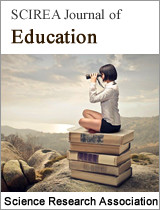Key Technology and Application Research of Smart Education from the Perspective of Brain Science
DOI: 282 Downloads 13900 Views
Author(s)
Abstract
The construction and sustainable development of smart education is inseparable from the innovation and application of smart technology. Edge computing technology expands the sharing of educational resources and educational services. Internet of Things technology enhances the perception of educational environment and teaching activities. Big data technology improves the intelligence of education management, decision-making and evaluation. Positioning technology perceives location information to improve targeted educational services. Virtual reality and augmented reality enhance the teaching interaction and experience of virtual space. Artificial intelligence technology, especially knowledge graph can improve the visualization of educational resources and achieve personalized recommendation. Semantic network and ontology, can let the machine read educational resources with the service. The paper focuses on cloud computing, Internet of Things, big data, positioning, virtual reality and augmented reality, semantic web and ontology, knowledge graph and other smart education technologies and describes the specific application of these technologies in smart education.
Keywords
Internet of Things•Big data•Positioning•Knowledge map•Smart education •Artificial intelligence
Cite this paper
Baoxian Jia, Wunong Zhang, Lige Yang,
Key Technology and Application Research of Smart Education from the Perspective of Brain Science
, SCIREA Journal of Education.
Volume 4, Issue 2, April 2019 | PP. 50-61.
References
| [ 1 ] | Méndez, Néstor Darío Duque, Paula Andrea Rodríguez Marín, and Demetrio Arturo Ovalle Carranza. "Intelligent Personal Assistant for Educational Material Recommendation Based on CBR." Personal Assistants: Emerging Computational Technologies. Springer, Cham, 2018. 113-131. |
| [ 2 ] | Chughtai M. W., Selamat A., Ghani I., Jung J. J. Retracted: e-learning recommender systems based on goal-based hybrid filtering[J]. International Journal of Distributed Sensor Networks, 2015(6): 1-18. |
| [ 3 ] | Salehi M., Kamalabadi I. N., Ghoushchi M. B. G. Personalized recommendation of learning material using sequential pattern mining and attribute based collaborative filtering[J]. Education and Information Technologies, 2014, 19(4): 713-735. |
| [ 4 ] | R. Studer, R. Benjamins, and D. Fensel. Knowledge engineering: Principles and methods. Data & Knowledge Engineering, 25(1–2):161–198, 1998. |
| [ 5 ] | Shi W, Jie C, Quan Z, et al. Edge Computing: Vision and Challenges[J]. IEEE Internet of Things Journal, 2016, 3(5):637-646. |
| [ 6 ] | Jia, B. X., Huang, X., & Jiao, S, Application of Semantic Similarity Calculation Based on Knowledge Graph for Personalized Study Recommendation Service. Educational Sciences: Theory & Practice, 18(6), 2958-2966. |
| [ 7 ] | Jia Baoxian.Application of Intelligent Information Retrieval for Big Data Oriented Brain Science .Advanced in Engineering Research,2018,Vol.166,pp:888-892 |
| [ 8 ] | Mashal I, Alsaryrah O, Chung T Y. Performance evaluation of recommendation algorithms on Internet of Things services[J]. Physica A Statistical Mechanics & Its Applications, 2016, 451:646-656. |

